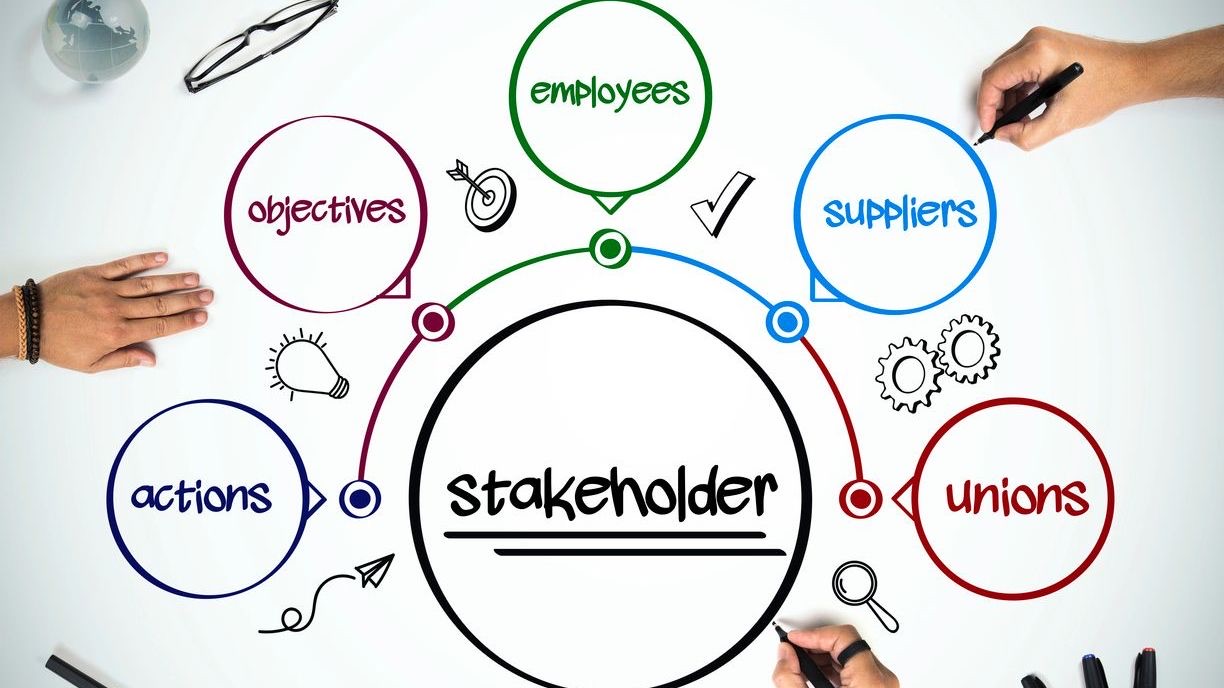Effective stakeholder relationship development forms the backbone of successful business operations, particularly for organizations implementing workforce management solutions. In the realm of employee scheduling and team communication, building strong connections with key stakeholders—from frontline employees to executive leadership—directly impacts adoption rates, user satisfaction, and overall return on investment. These relationships don’t simply happen; they require intentional communication strategies tailored to each stakeholder group’s unique needs and concerns. Organizations that excel at stakeholder management create transparent, consistent communication channels that foster trust, encourage feedback, and address concerns proactively rather than reactively.
When implementing scheduling solutions like Shyft, stakeholder relationship development becomes even more critical as the technology touches multiple departments and hierarchical levels. Each group brings different perspectives and priorities—managers focus on operational efficiency and coverage, employees prioritize schedule flexibility and work-life balance, while executives concentrate on productivity metrics and cost management. Bridging these sometimes competing interests requires sophisticated communication approaches that demonstrate value to each stakeholder while building a unified vision. Organizations that master this delicate balance transform stakeholders from mere users into advocates and partners in the continuous improvement of their workforce management practices.
Identifying Key Stakeholders in Workforce Scheduling
The first step in developing effective stakeholder relationships is identifying who your key stakeholders actually are. For scheduling and workforce management initiatives, stakeholders typically span multiple levels of organizational hierarchy and may cross department boundaries. Understanding each group’s specific interests, concerns, and communication preferences lays the foundation for tailored engagement strategies. In effective communication planning, stakeholder mapping should be comprehensive and regularly updated as the organization evolves.
- Frontline Employees: The end users who rely on scheduling tools daily for shift information, availability submissions, and time-off requests.
- Department Managers: Responsible for creating and maintaining schedules while balancing operational needs with employee preferences.
- HR Leadership: Concerned with compliance, policy enforcement, and employee experience metrics.
- Executive Leadership: Focused on cost management, productivity metrics, and alignment with strategic objectives.
- IT Department: Manages technical implementation, system integrations, and ongoing support.
Each of these stakeholder groups has different priorities and communication needs. For example, retail employees may prioritize mobile access and shift flexibility, while healthcare administrators focus on credential verification and compliance. Understanding these distinctions helps organizations develop targeted communication approaches rather than one-size-fits-all messaging that fails to resonate with specific audiences.
Building Effective Communication Channels
Once stakeholders are identified, establishing reliable, accessible communication channels becomes essential. The effectiveness of stakeholder relationship development directly correlates with the quality and consistency of communication infrastructure. Organizations implementing workforce management solutions should create multi-channel communication strategies that accommodate different preferences while maintaining message consistency. Modern team communication tools provide opportunities for both synchronous and asynchronous information exchange.
- Digital Communication Platforms: Implementing dedicated channels within messaging apps or team communication software for scheduling updates and feedback.
- Regular Stakeholder Meetings: Scheduling recurring check-ins with different stakeholder groups to address concerns and share updates.
- Mobile-First Approaches: Ensuring communication reaches frontline employees through their preferred devices with mobile access options.
- Feedback Mechanisms: Creating structured ways for stakeholders to provide input on processes and technology.
- Knowledge Bases: Developing centralized information repositories for self-service access to documentation and training materials.
The communication infrastructure should be designed with stakeholder convenience in mind. For instance, hospitality organizations might prioritize mobile notifications for schedule changes, knowing their employees rarely access desktop computers during their workday. Successful stakeholder relationship development requires meeting people where they are, not forcing them to adapt to inconvenient communication methods.
Stakeholder Engagement Strategies
Moving beyond basic communication, effective stakeholder engagement builds deeper relationships through meaningful participation. Engagement transforms stakeholders from passive recipients of information into active partners in the success of workforce management initiatives. Organizations that excel at engagement create multiple touchpoints for interaction, recognizing that different stakeholders may require different engagement approaches. Employee engagement in shift work environments has unique challenges that require targeted strategies.
- Early Involvement: Including stakeholder representatives in solution selection, customization, and implementation planning.
- Champions Programs: Identifying and empowering advocates within each stakeholder group to support adoption and provide peer education.
- Training Customization: Creating role-specific training programs that address each stakeholder group’s unique needs.
- Sandbox Environments: Providing opportunities for hands-on exploration of new features in consequence-free environments.
- Recognition Systems: Acknowledging stakeholders who contribute to successful adoption and improvement initiatives.
Effective engagement strategies recognize the importance of stakeholder autonomy. For example, healthcare organizations implementing shift management solutions might establish clinical advisory committees to ensure the technology accommodates unique clinical workflows. This inclusive approach not only improves system fit but builds stakeholder investment in the solution’s success.
Collecting and Implementing Stakeholder Feedback
Feedback collection forms the cornerstone of stakeholder relationship development, providing critical insights for continuous improvement while demonstrating that stakeholder perspectives are valued. Organizations committed to stakeholder-centric approaches implement systematic feedback mechanisms with clear follow-up processes. These systems should balance structured data collection with opportunities for open-ended input. Effective feedback mechanisms close the communication loop by showing stakeholders how their input influences decisions.
- Multi-Modal Feedback Channels: Offering various ways to provide input, from digital surveys to focus groups, accommodating different communication preferences.
- Targeted Feedback Campaigns: Creating specific feedback initiatives around feature launches, process changes, or identified pain points.
- Actionable Metrics: Collecting data that directly informs decision-making rather than vanity metrics with limited practical application.
- Transparent Prioritization: Clearly communicating how feedback is evaluated and prioritized for implementation.
- Closed-Loop Communication: Following up with stakeholders about how their feedback influenced changes or decisions.
Effective feedback implementation requires balance between responsiveness and strategic focus. For example, retail organizations might receive numerous suggestions about shift marketplace features, but must prioritize changes that benefit the broadest user base while aligning with organizational objectives. Communicating this prioritization process helps stakeholders understand decision rationales even when their specific suggestions aren’t immediately implemented.
Managing Stakeholder Expectations and Conflicts
Even with excellent communication infrastructure, stakeholder relationships sometimes face challenges through competing priorities or misaligned expectations. Successful stakeholder relationship development includes proactive expectation management and constructive conflict resolution processes. Organizations should anticipate potential points of friction and develop mitigation strategies before issues escalate. Conflict resolution in scheduling requires particular attention as schedule decisions directly impact people’s lives and livelihoods.
- Clear Parameter Setting: Establishing well-defined constraints and possibilities upfront to avoid unrealistic expectations.
- Phased Implementation Plans: Breaking large changes into manageable increments with clearly communicated timelines.
- Transparent Decision Criteria: Sharing the frameworks used to evaluate competing priorities and make trade-off decisions.
- Mediation Processes: Establishing neutral facilitation methods for addressing conflicts between stakeholder groups.
- Escalation Pathways: Creating clear routes for resolving issues that cannot be addressed through standard processes.
Effective conflict management recognizes that stakeholder disagreements often stem from valid but different perspectives. For instance, scheduling conflicts between operations managers (focused on coverage) and employees (concerned with work-life balance) require solutions that acknowledge both viewpoints. Organizations that handle these situations with empathy and fairness build stronger stakeholder relationships even through challenging situations.
Measuring Stakeholder Satisfaction and Relationship Health
Quantifying the health of stakeholder relationships provides crucial insights for continuous improvement while demonstrating organizational commitment to stakeholder success. Effective measurement frameworks include both objective usage metrics and subjective satisfaction indicators. Organizations should develop balanced scorecards that track relationship health across all key stakeholder groups. Advanced analytics and reporting capabilities make these measurements more accessible and actionable.
- System Adoption Metrics: Tracking usage patterns, feature utilization, and engagement levels across stakeholder groups.
- Net Promoter Scores: Measuring stakeholder likelihood to recommend the solution to peers or colleagues.
- Satisfaction Surveys: Conducting regular assessments of stakeholder experiences with both technology and support processes.
- Support Ticket Analysis: Evaluating the volume, nature, and resolution of issues reported by different stakeholder groups.
- Qualitative Feedback Channels: Creating opportunities for open-ended input through focus groups or feedback forums.
Effective measurement approaches balance quantitative and qualitative data for a complete picture of relationship health. For example, healthcare organizations might supplement system usage statistics with nurse manager interviews to understand the real-world impact of nurse scheduling software on departmental operations. This holistic approach provides context for numerical metrics while identifying improvement opportunities that might not emerge from data alone.
Leveraging Technology for Stakeholder Relationship Management
Modern technology tools provide powerful capabilities for systematizing and scaling stakeholder relationship management. From automated communication workflows to AI-powered analytics, organizations can leverage technology to enhance human relationship building rather than replace it. Effective technology implementation recognizes that digital tools should simplify relationship management processes while maintaining the personalized elements that build authentic connections. Technology in shift management offers particular benefits for stakeholder communication.
- Stakeholder Relationship Management Systems: Implementing dedicated platforms for tracking interactions, preferences, and communication history.
- Automated Communication Workflows: Creating rule-based notifications for important milestones, updates, or required actions.
- Personalization Engines: Tailoring communication content and timing based on stakeholder preferences and behavior patterns.
- Sentiment Analysis: Using natural language processing to evaluate stakeholder attitudes expressed in feedback and communications.
- Interactive Dashboards: Providing real-time visibility into relationship health metrics and engagement indicators.
Effective technology deployment enhances human relationship building rather than replacing it. For instance, real-time notification systems can automatically alert managers to potential scheduling conflicts, enabling proactive resolution before employees experience frustration. Organizations like those using AI-powered scheduling must balance automation advantages with transparency about how algorithms make decisions to maintain stakeholder trust.
Long-term Stakeholder Relationship Development
Beyond immediate implementation concerns, sustainable stakeholder relationships require ongoing nurturing and evolution. Organizations committed to relationship excellence develop strategic approaches for long-term engagement that accommodate changing needs and organizational growth. These approaches recognize that stakeholder relationships develop through predictable stages and require different support at each phase. Adapting to change becomes a critical capability for maintaining stakeholder trust through organizational transitions.
- Relationship Lifecycle Management: Mapping engagement strategies to different phases from initial onboarding through maturity.
- Continuous Education: Providing ongoing learning opportunities as features evolve and stakeholder responsibilities change.
- Stakeholder Community Building: Creating peer networks where stakeholders can share best practices and provide mutual support.
- Strategic Partnership Development: Elevating key stakeholders to advisor roles in product roadmap and strategic planning.
- Change Management Capabilities: Building organizational resilience to navigate transitions while maintaining stakeholder confidence.
Long-term relationship strategies incorporate systematic knowledge transfer to address stakeholder turnover. For example, retail organizations with high manager turnover might create detailed onboarding packages specific to scheduling responsibilities, ensuring new leaders quickly understand both technical processes and stakeholder management best practices for retail scheduling software. This institutional knowledge preservation maintains relationship continuity despite individual personnel changes.
Conclusion
Effective stakeholder relationship development represents a strategic investment that yields substantial returns in technology adoption, workforce satisfaction, and operational efficiency. By creating systematic approaches to stakeholder identification, communication, engagement, feedback, and conflict resolution, organizations build the foundation for sustainable success with workforce management initiatives. These relationships thrive when organizations demonstrate authentic commitment to stakeholder success, balance competing priorities transparently, and continuously evolve their approaches based on measured outcomes. Most importantly, successful stakeholder relationship management recognizes that technology solutions like Shyft achieve their full potential only when human relationships provide the supportive context for technology adoption.
Looking forward, stakeholder relationship development will continue evolving alongside changing workforce expectations, technological capabilities, and organizational structures. The most resilient approaches will maintain core principles of transparency, respect, and mutual benefit while adapting specific tactics to emerging needs. Organizations that invest in stakeholder relationship capabilities develop competitive advantages through faster technology adoption, more effective feedback loops, and greater organizational agility. As workforce management becomes increasingly central to operational excellence, the ability to build and maintain strong stakeholder relationships across all levels of the organization will distinguish market leaders from those struggling with implementation challenges and user resistance.
FAQ
1. How frequently should we communicate with different stakeholder groups?
Communication frequency should align with stakeholder roles and the project phase. During implementation, daily updates may be appropriate for project team members, while weekly summaries might suffice for executive sponsors. Post-implementation, manager stakeholders typically benefit from weekly engagement, frontline employees from bi-weekly updates, and executive leadership from monthly reports. However, these frequencies should be adjusted based on feedback and engagement metrics. The most effective approaches establish regular cadences supplemented by event-based communications for important changes or milestones. Regardless of frequency, maintaining consistent communication channels helps build stakeholder trust through predictability.
2. What metrics should organizations track to evaluate stakeholder relationship health?
Comprehensive measurement approaches combine quantitative and qualitative indicators across multiple dimensions. Key metrics include system adoption rates (feature usage, login frequency), satisfaction measurements (Net Promoter Score, satisfaction surveys), support metrics (ticket volume, resolution times), engagement indicators (feedback submission rates, meeting attendance), and business impact measures (schedule accuracy, labor cost optimization). The most insightful measurement frameworks segment these metrics by stakeholder group to identify specific relationship challenges. Organizations should establish baselines, set improvement targets, and regularly review trends rather than focusing on isolated data points. Effective metrics frameworks evolve as relationships mature to capture increasingly sophisticated aspects of partnership.
3. How can organizations balance competing stakeholder interests in scheduling decisions?
Balancing competing interests requires transparent decision frameworks that acknowledge legitimate differences in stakeholder priorities. Organizations should establish clear decision hierarchies that determine which factors take precedence in different scenarios while creating structured exceptions processes for unique circumstances. Effective balancing strategies include creating cross-functional governance committees with representation from different stakeholder groups, implementing formal trade-off analysis for significant decisions, and developing escalation pathways for resolving complex conflicts. Most importantly, organizations should communicate not just decisions but decision rationales, helping stakeholders understand why certain priorities took precedence in specific situations even when outcomes don’t align with their individual preferences.
4. What approaches help rebuild stakeholder relationships after implementation challenges?
Relationship recovery begins with accountability—acknowledging issues directly without deflection or minimization. Organizations should conduct thorough root cause analysis to identify whether problems stemmed from technology limitations, implementation approaches, expectation setting, or communication breakdowns. Recovery plans should include direct stakeholder engagement through listening sessions, transparent communication about remediation steps, accelerated issue resolution, and regular progress updates. Rebuilding trust takes time and consistent follow-through, often requiring more frequent touchpoints than normal relationship maintenance. Most successful recovery efforts balance addressing immediate pain points with implementing systemic improvements that prevent similar issues in the future, demonstrating organizational learning rather than just problem remediation.
5. How should organizations prepare stakeholders for new feature rollouts?
Effective feature rollouts follow a phased communication approach starting well before implementation. Organizations should begin with conceptual introduction (explaining the “why” behind changes), proceed to detailed previews (demonstrations, documentation), provide hands-on opportunities (sandbox testing, training sessions), support initial adoption (office hours, focused support), and gather systematic feedback for refinement. The most successful approaches segment communication by stakeholder group, tailoring content depth and technical detail to different roles. For significant changes, organizations benefit from identifying early adopters or champions who can test features, provide initial feedback, and then support peer learning. This phased approach prevents information overload while building progressive stakeholder familiarity with new capabilities.












